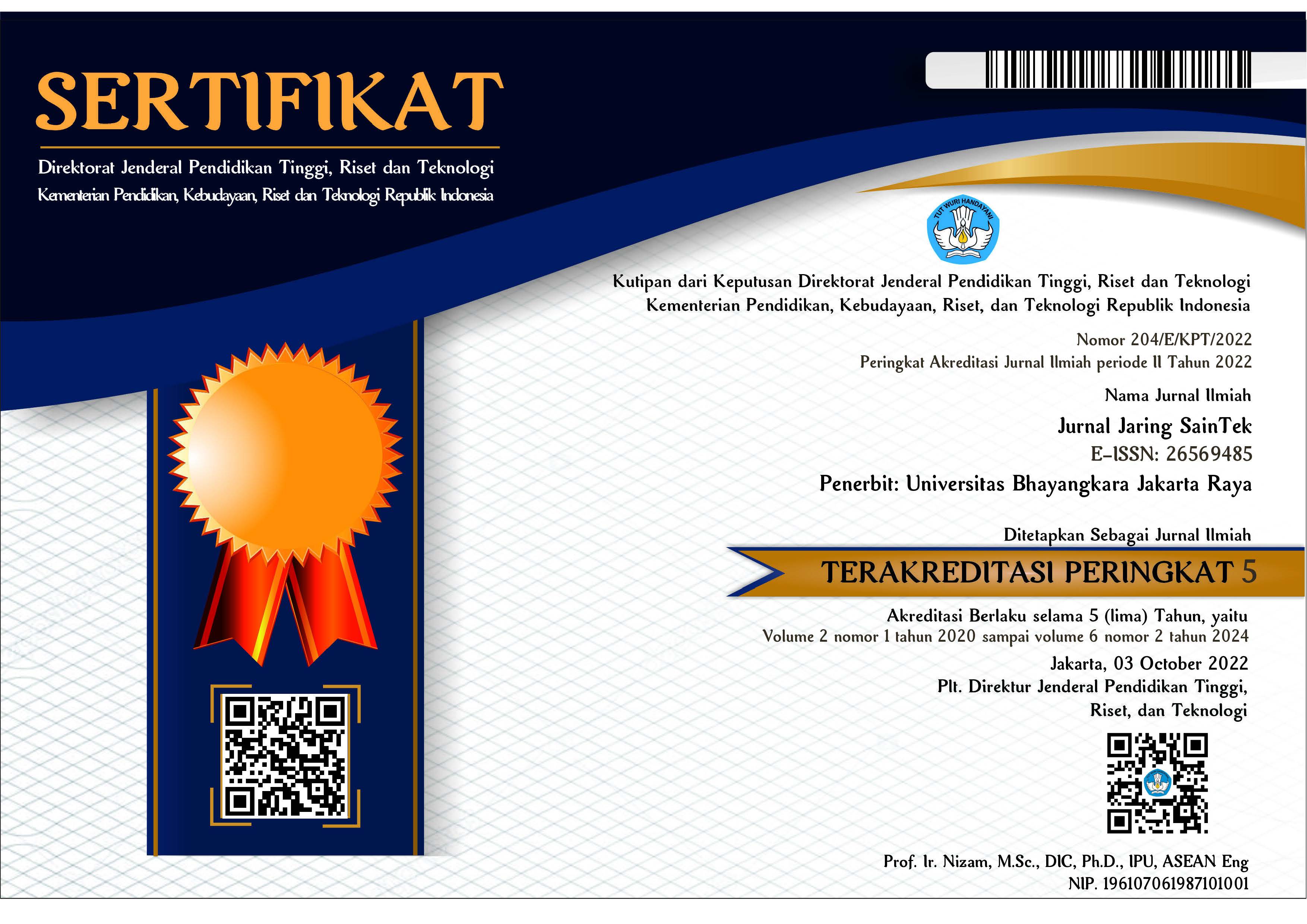STUDI PEMANFAATAN LIMBAH CO2 MENJADI CO2 CAIR DENGANTEKNOLOGI CO2 PURIFICATION DI INDUTRI BAJA
DOI:
https://doi.org/10.31599/vhfvst23Keywords:
Steel industry, CO2 emission, recycle, liquid CO2, CO2 Purification technologyAbstract
Steel products are needed to support the
development of the manufacturing industry and
other strategic industries in Indonesia. The
steel industry is one of the contributors to CO2
gas emissions, which contributes about 15
percent of greenhouse gases (GHG). PT. XYZ,
which is one of the largest steel industries in
Indonesia, produces CO2 waste from the
reduction process in the exhaust gas by an
average of 20 tons/hour to produce its steel.
This study aims to utilize CO2 waste in exhaust
gas into liquid CO2 so that its utilization can
reduce CO2 emissions to the environment.
Waste minimization by PT. XYZ is by recycling
CO2 waste into liquid CO2 with CO2
Purification technology. Liquid CO2 is useful
in various industries such as the manufacture
of carbonated beverages, food and beverage
preservation, and the welding industry. Waste
minimization has resulted in a 10% reduction
in CO2 emissions by an average of 10%. The
magnitude of this decrease is influenced by the
limited production capacity and storage tank
capacity. The results of the study also show
that the variables that are considered for the
use of CO2 emissions are the purity of CO2,
raw gas CO2.
Downloads
References
Agustina, S., & Wahyudi, H. (2010). Studi
Proses Pemisahan Gas CO2 dari Gas
Buang Industri Besi Baja Melalui
Optimalisasi Rancangan Kontaktor
Membran. July 2019.
Gas, I., & Kaca, R. (2020). Inventarisasi Gas
Rumah Kaca (GRK) dan Monitoring,
Pelaporan, Verifikasi (MPV) 2019.
Harihastuti, N., Widiasa, I. N., Djayanti, S.,
Harsono, D., & Sari, I. R. J. (2010).
Pengurangan Emisi Co2 Pada Gas
Buang Boiler Dengan Teknologi
Absorpsi Melalui Membran Serat
Berpori. In Jurnal Riset Industri (Vol. 4,
Issue 1, pp. 57–66).
Hart, A., & Gnanendran, N. (2009). Energy
Procedia Cryogenic CO 2 Capture in
Natural Gas. Energy Procedia, 1(1),
–706.
https://doi.org/10.1016/j.egypro.2009.01
.092
Hu, C. qing, CHEN, L. yun, ZHANG, C. xia,
QI, Y. hong, & YIN, R. yu. (2006).
Emission Mitigation of CO2 in Steel
Industry: Current Status and Future
Scenarios. Journal of Iron and Steel
Research International, 13(6), 38–52.
https://doi.org/10.1016/S1006706X(06)60107-6
Indonesia,
S. (2010). Laporan Survey (2010).
Emisi gas rumah kaca PT. Krakatau
Steel pabrik besi spon unit hyl 3.
stiyanie, D. (2011). Pemanfaatan emisi CO2
dari PLTU Batubara dalam pengolahan
limbah cair domestik berbasis
mikroalga.
Kartika, W. (2012). Pemanfaatan Limbah CO2
Dengan Pendekatan Produksi Bersih (
Kajian Pemanfaatan oleh PT . Krakatau
Steel dan PT . Resources Jaya
Management
Indonesia Krakatau
Karbonindo , Cilegon Banten ).
Universitas Indonesia.
Muryani, M. (2020). Produksi bersih dan
model kerjasama sebagai upaya mitigasi
emisi gas rumah kaca pada sektor
industri. Jurnal Sosiologi Dialektika,
(1),
https://doi.org/10.20473/dk.v13i1.2018.
-65
antoso, A. D., Darmawan, R. A., & Susanto,
J. P. (2011). Mikro Alga untuk
Penyerapan Emisi CO2 dan Pengolahan
Limbah Cair di Lokasi Industri. Jurnal
Ilmu Dan Teknologi Kelautan Tropis,
(2), 62–70.
Yu, C. H., Huang, C. H., & Tan, C. S. (2012).
A review of CO2 capture by absorption
and adsorption. Aerosol and Air Quality
Research,
(5),
–769.
https://doi.org/10.4209/aaqr.2012.05.01
Yu, C. H., & Tan, C. S. (2014). CO2 capture
by aqueous solution containing mixed
alkanolamines and diethylene glycol in a
rotating packed bed. Energy Procedia,
,
–764.
https://doi.org/10.1016/j.egypro.2014.11
.084









